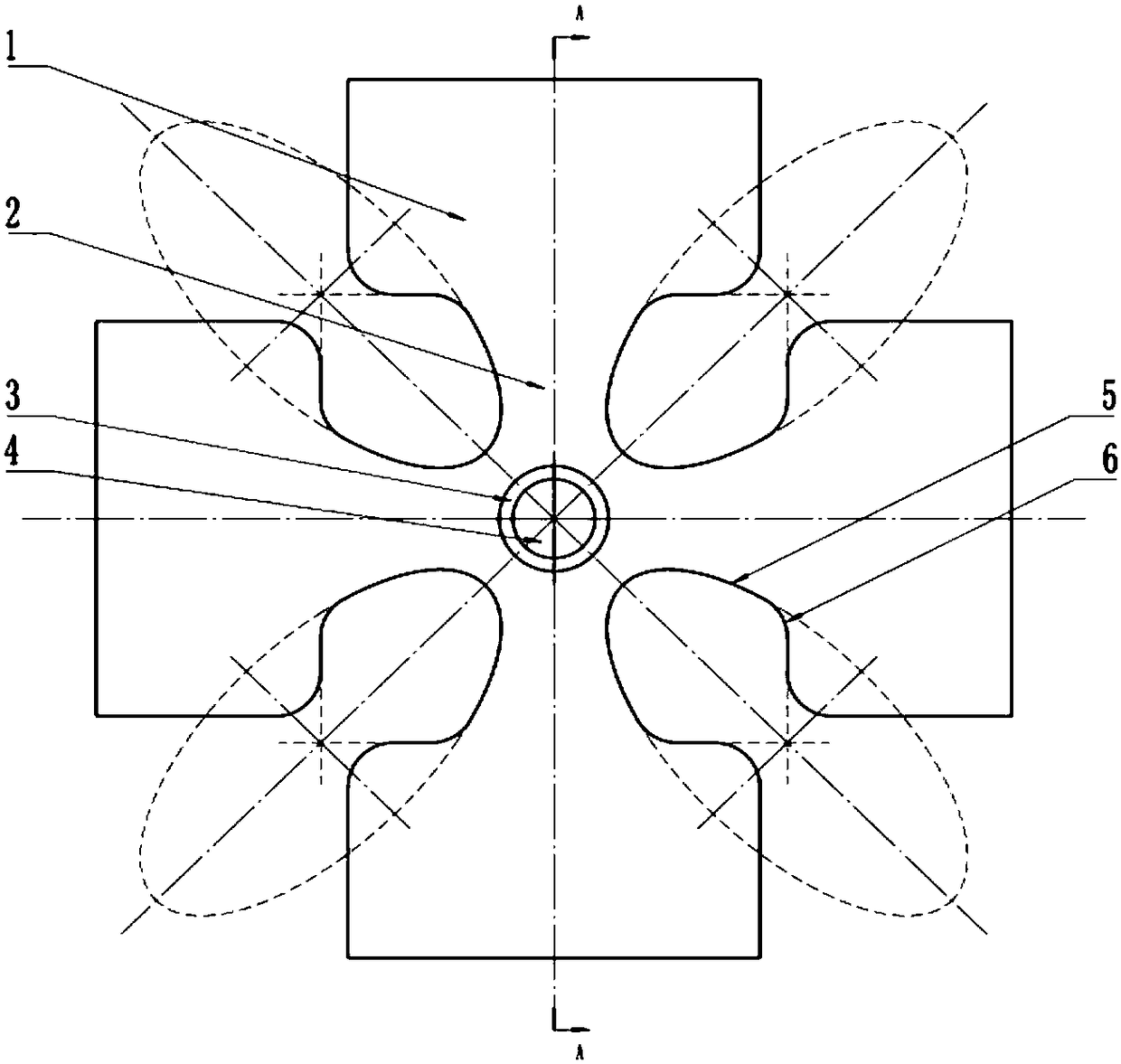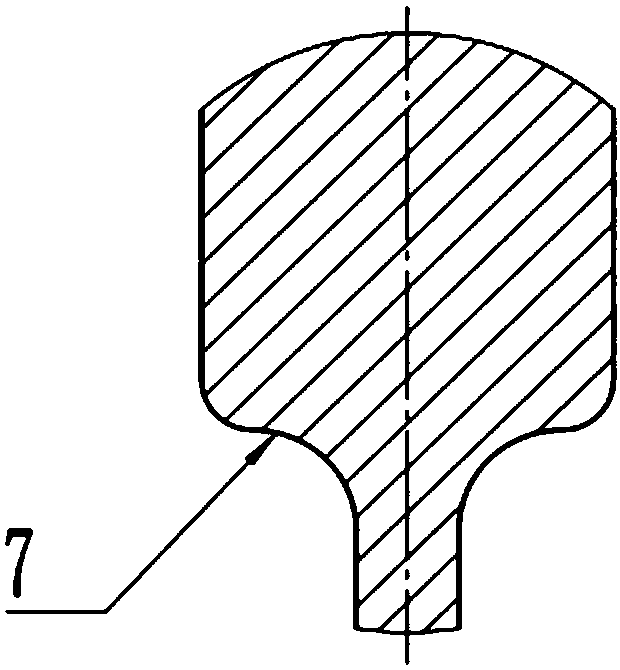Biaxial tensile fatigue test piece with conic curve transition and test method thereof
A conic curve and biaxial stretching technology, which is applied in the direction of applying repeated force/pulsation force to test the strength of materials, can solve the problem that the uniaxial stretching test method cannot faithfully reflect the stress of the material, and achieve in-situ Biaxial stretching, easy and accurate positioning, and accurate data effects
- Summary
- Abstract
- Description
- Claims
- Application Information
AI Technical Summary
Problems solved by technology
Method used
Image
Examples
Embodiment 1
[0029] Such as Figure 1a As shown, a biaxial tensile fatigue test piece with a conic curve transition, the test piece is in the shape of a cross as a whole, with four loading arms, one end of the four loading arms converges into a central area 4, and the other end is a clamping area 1 , the test piece is clamped by means of clamps, etc., and a transition zone 2 formed by a conic curve 5 is provided between the roots of adjacent loading arms. The conic curve 5 is an ellipse, and the major axis of the ellipse coincides with a symmetrical axis of the test piece. The transition between the conic curve 5 and the clamping area 1 is a rounded part 6; the thickness of the clamping area 1 is thicker than that of the central area 4, and there is a thickness reduction area 3 between the transition area 2 and the central area 4; the thickness reduction area 3 Used to connect the thicker transition zone 2 and the thinner central zone 4, the cross-sectional view along the A-A direction is a...
Embodiment 2
[0036] The basic structure of the test piece is the same as that of Example 1, except that the transition mode of the thickness reduction zone 3 in the thickness direction is changed to a spline curve 8, such as figure 2 As shown, where the spline curve 8 satisfies a smooth transition at the connection between the central area 4 and the transition area 2 .
Embodiment 3
[0038] The basic structure of the test piece is the same as that of Example 1, except that the transition mode of the thickness reduction zone 3 in the thickness direction is changed to a single arc 9, such as image 3 As shown, the single circular arc 9 satisfies a smooth transition at the connecting central area 4 .
PUM
 Login to View More
Login to View More Abstract
Description
Claims
Application Information
 Login to View More
Login to View More - R&D
- Intellectual Property
- Life Sciences
- Materials
- Tech Scout
- Unparalleled Data Quality
- Higher Quality Content
- 60% Fewer Hallucinations
Browse by: Latest US Patents, China's latest patents, Technical Efficacy Thesaurus, Application Domain, Technology Topic, Popular Technical Reports.
© 2025 PatSnap. All rights reserved.Legal|Privacy policy|Modern Slavery Act Transparency Statement|Sitemap|About US| Contact US: help@patsnap.com



